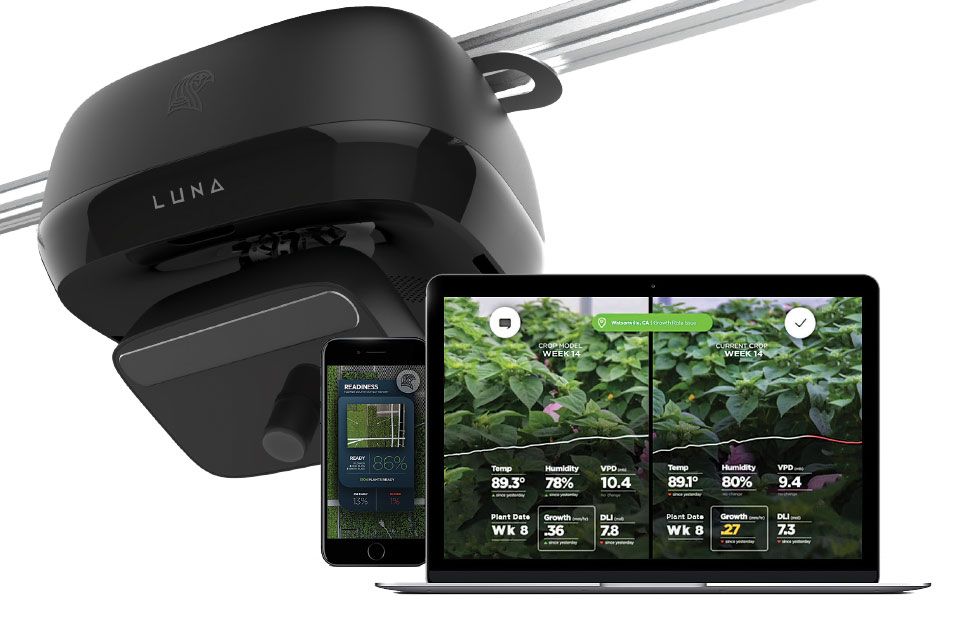Greenhouse computer vision startup iUNU (pronounced “you-knew”) has raised $7 million in a Series A round co-led by S2G Ventures and Ceres Partners. This follows a $7.5 million round in February 2019.
S2G Ventures is keen on the greenhouse tech space, particularly as Covid-19 has highlighted a number of weaknesses in the food supply chain, says principal at the firm Cristina Rohr.
“In terms of our long-term trend and what we’re seeing in indoor ag is the need for more efficient, more sustainable operations that increase grower profitability,” Rohr tells AFN.
“The pandemic has accelerated some of the trends that we’ve seen before, like the need to be closer to the supply chain. Indoor ag can play a role both in terms of ensuring food security, but also meeting consumer demands around transparency, traceability, and eliminating food safety risks.”
Launched in 2013, Seattle-based iUNU targets the precision greenhouse space with its hardware-software platform called LUNA. With the use of mobile and fixed cameras, it uses high-definition imaging and environmental sensors to record a variety of metrics, such as the real-time growth rate of each plant. The software compiles this data and uses machine learning tech to create individual plant models throughout the day.
The startup claims LUNA can even detect minute changes in an individual plant’s health, allowing growers to respond uniquely to each plant’s needs.
LUNA hit over 1 billion square feet of greenhouse space analyzed in 2019, according to iUNU. As the platform carries out more imaging, it becomes faster and more precise – learning from reading images the way that humans learn from reading books, the startup says.
Indoor ag’s growing needs
The Series A funding will be used to scale up iUNU’s marketing efforts and partnerships with third parties.
“I think one of the things that this industry needs most especially in CEA [controlled environment agriculture] is for partners, systems, and companies to work together. So, we’re really going to buff up our integrations in a way that benefits the customer most,” founder and CEO Adam Greenberg tells AFN.
Greenhouse tech is a hot commodity right now, with multiple startups attracting investment of late. New York’s Gotham Greens just announced an $87 million Series D raise, for example. Kentucky-based greenhouse tomato grower AppHarvest raised $28 million and added Martha Stewart and Impossible Foods’ chief financial officer to its board in August, before going public at a $1 billion valuation a couple of months later. New York hydroponic greenhouse startup BrightFarms raised $100 million in Series E funding in October, while San Francisco’s Plenty scooped up a $140 million Series D round in the same month to research strawberry cultivation with new investor Driscoll’s.
This is a good thing, according to Greenberg, who describes our communities as “under-greenhoused.” There is not a lot of competition for LUNA, he claims, with the closest rivals offering sample sizing instead of comprehensive imagery.
We’re only in the early days for this space, Rohr adds.
“This is going to have very serious momentum,” she says. “If you are looking at consumer preferences, from a supply and demand side we are seeing signals that this is a trend that’s going to get a lot more momentum. We are very bullish both in terms of indoor profitability, the supply side, but also in terms of consumer preferences and the surety of supply.”
However, the eagerness to adopt new technology among greenhouse growers is another matter. Marketing these solutions to CEA operations can prove particularly challenging. The more acutely the grower feels a pain point, the more likely they may be to invest in innovative solutions. Growers who are already more data-oriented make for an easier sell, while Covid-19 has added some expediency to the need to adopt technology.
“A grower might have lost thousands upon thousands of pounds of produce because of labor or immigration issues arising from Covid-19,” says Greenberg. “You realize you don’t have people on-premise to plan or pick and you start doing the cost-benefit analysis.”




